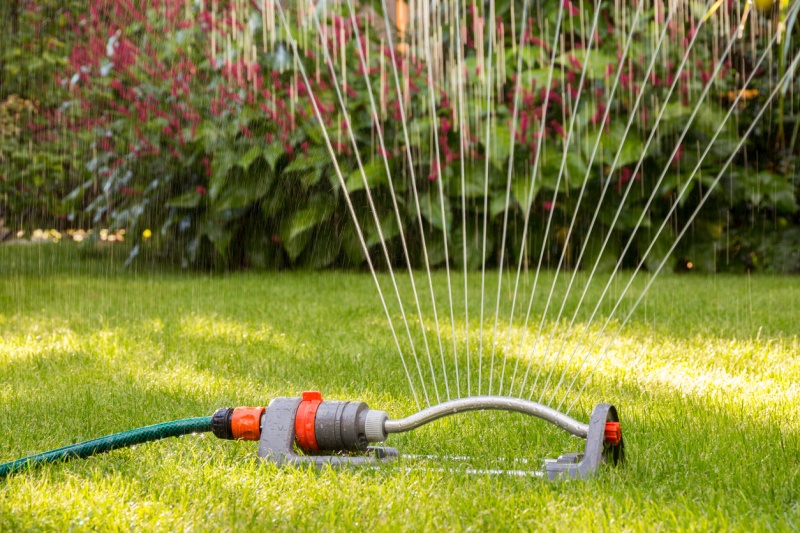|
Wise Ways to Water Your Yard
 Whether you’re in a community with watering restrictions or not, it’s common sense to look for ways to maximize efficiency when watering your lawn and gardens. Rain Bird, a supplier of irrigation products for residential, commercial, golf, and agricultural applications, offers these steps to help you use water wisely:
- Understand your soil. The soil type in your yard will greatly affect your watering schedule and influence the type of sprinkler you choose.
- Determine your water pressure. Water pressures vary greatly. If you have high pressure, make sure you install products equipped with pressure-regulating devices, which can save you up to one gallon per minute, per sprinkler.
- Design a smart landscape. Use drought-tolerant plants when possible. Reserve your use of grass for areas with high value, visual prominence or frequent physical use.
- Divide your yard into separate zones so groundcover, shrubs and trees can be watered separately and less frequently.
- Use a rain sensor to automatically shut off your sprinkler system when it rains.
- Maximize performance by regulating water pressure. Pressure regulation can save up to one gallon per minute, per sprinkler, by delivering the right amount of water to get the job done, without any waste.
- Prevent puddles. Use sprinklers with pre-installed check valves and low precipitation rates to prevent soggy areas, which can kill landscape or encourage fungus to grow.
- Use drip irrigation for flower beds and shrubs to deliver the water directly to the base of plants, saving up to 80 percent over watering with traditional sprinklers. Drip irrigation also prevents weeds and encourages healthier plants by watering each plant's root zone, eliminating overspray and evaporation.
- Use mulch. Applying mulch helps drainage, encourages root development and improves soil by making nutrients more available to plants, while conserving water.
- Water between 5 a.m. and 10 a.m. when the sun is low, winds are calm and temperatures are cool. This minimizes water loss due to evaporation and windy conditions, and helps avoid fungus growth on leaves. Check with your local water provider to see what days and times you’re allowed to water.
- Break up watering times into shorter segments. Applying more water than the ground can absorb leads to excess runoff.
- Water less frequently. Deep, infrequent watering will train the plants' roots to grow deeper and more robust.
- Water only when your plants demand it. If your plant leaves are beginning to curl and your footprints are staying longer than usual, it's time to water.
- When in doubt, consult with a landscape professional to come up with the right plan for a water-efficient yard and garden that will stay green and colorful all season long.
If you need more real estate information, feel free to contact me.
Copyright© 2024 RISMedia, The Leader in Real Estate Information Systems and Real Estate News. All Rights Reserved. This material may not be republished without permission.
|